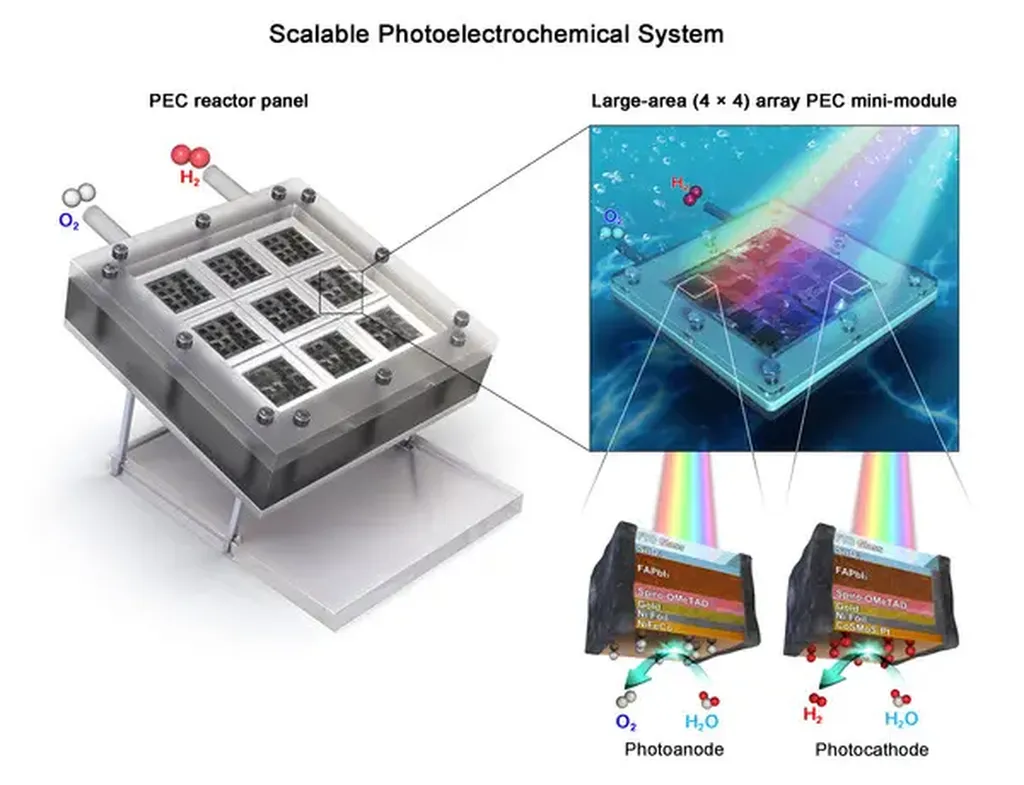In a groundbreaking study published in the journal “Chemical Physics Letters,” researchers have uncovered a new dimension in the quest for clean energy, specifically within the realm of photosynthetic fuel cells. These innovative devices, which generate hydrogen energy from photosynthesis, have long been touted as a promising next-generation energy source. However, the intricate relationship between light absorption and power generation has remained a mystery—until now.
Dr. Hitoki Semizo, a leading researcher from the Faculty of Science & Engineering at Setsunan University in Japan, has shed light on this complex interplay. His team’s findings reveal that the power density of photosynthetic fuel cells peaks around the wavelength where chlorophyll absorbs light, mirroring the natural process of photosynthesis. “The electron generated by light absorption in chlorophyll acts as the trigger for power generation,” Semizo explains. This discovery not only deepens our understanding of the underlying mechanisms but also paves the way for more efficient energy conversion technologies.
What truly sets this research apart is the identification of pheophytin, a molecule derived from chlorophyll, as a key player in the power generation process. Unlike chlorophyll, pheophytin absorbs light at a wavelength of around 520 nm, enhancing the power density of the fuel cells. “We found that photosynthetic fuel cells using pheophytin can also generate power when exposed to light,” Semizo notes. This dual mechanism of light absorption—through both chlorophyll and pheophytin—opens up new avenues for optimizing the design and performance of photosynthetic fuel cells.
The commercial implications of this research are substantial. As the energy sector increasingly turns to renewable sources, the development of efficient and scalable photosynthetic fuel cells could revolutionize the way we harness solar energy. By leveraging the natural processes of photosynthesis, these fuel cells offer a clean and sustainable alternative to traditional energy sources. The identification of pheophytin as a critical component could lead to advancements in biomaterial engineering, enabling the creation of more effective and cost-efficient energy solutions.
Moreover, the findings published in “Chemical Physics Letters” highlight the importance of interdisciplinary research in driving innovation. By bridging the gap between chemistry, physics, and biology, scientists are uncovering new possibilities for clean energy technologies. As Dr. Semizo’s work demonstrates, the key to unlocking the full potential of photosynthetic fuel cells lies in understanding the intricate dance of molecules and light.
In the broader context, this research underscores the need for continued investment in fundamental science. The discoveries made by Dr. Semizo and his team not only advance our knowledge of photosynthetic processes but also hold the promise of transforming the energy landscape. As we strive for a more sustainable future, the insights gained from this study could be the catalyst for the next generation of clean energy technologies. The journey towards a greener world is fraught with challenges, but with each new discovery, we edge closer to a future powered by the very forces of nature itself.

